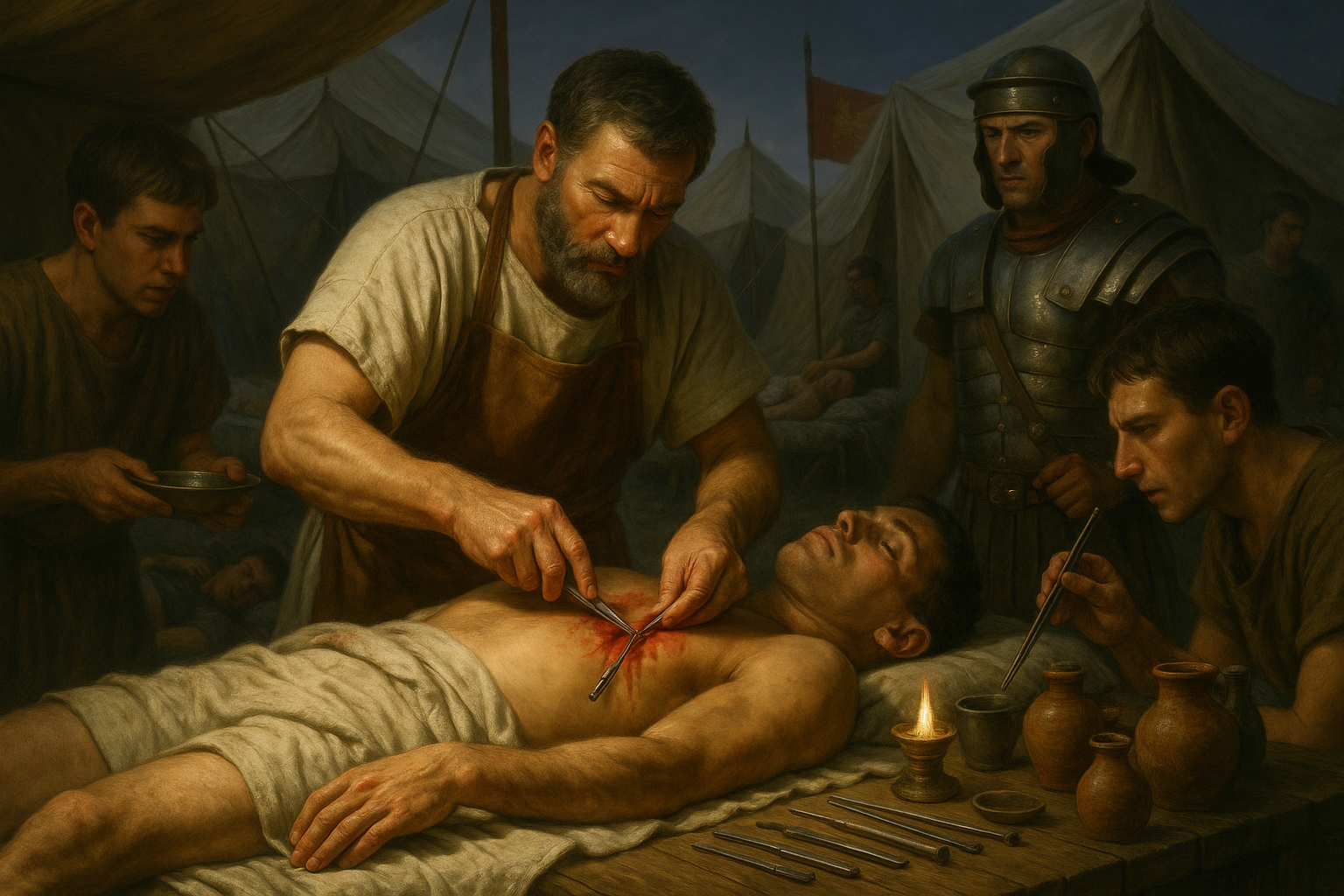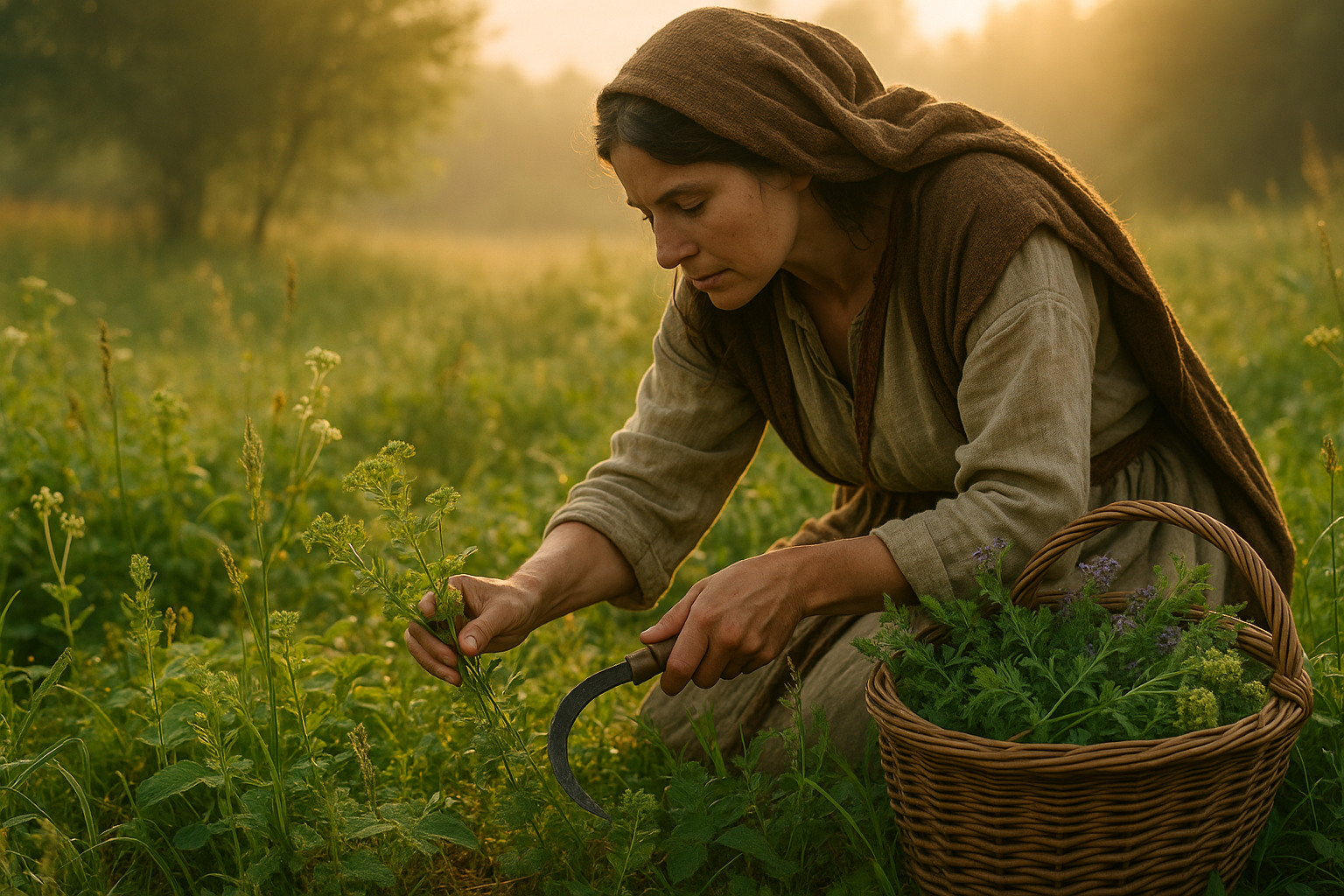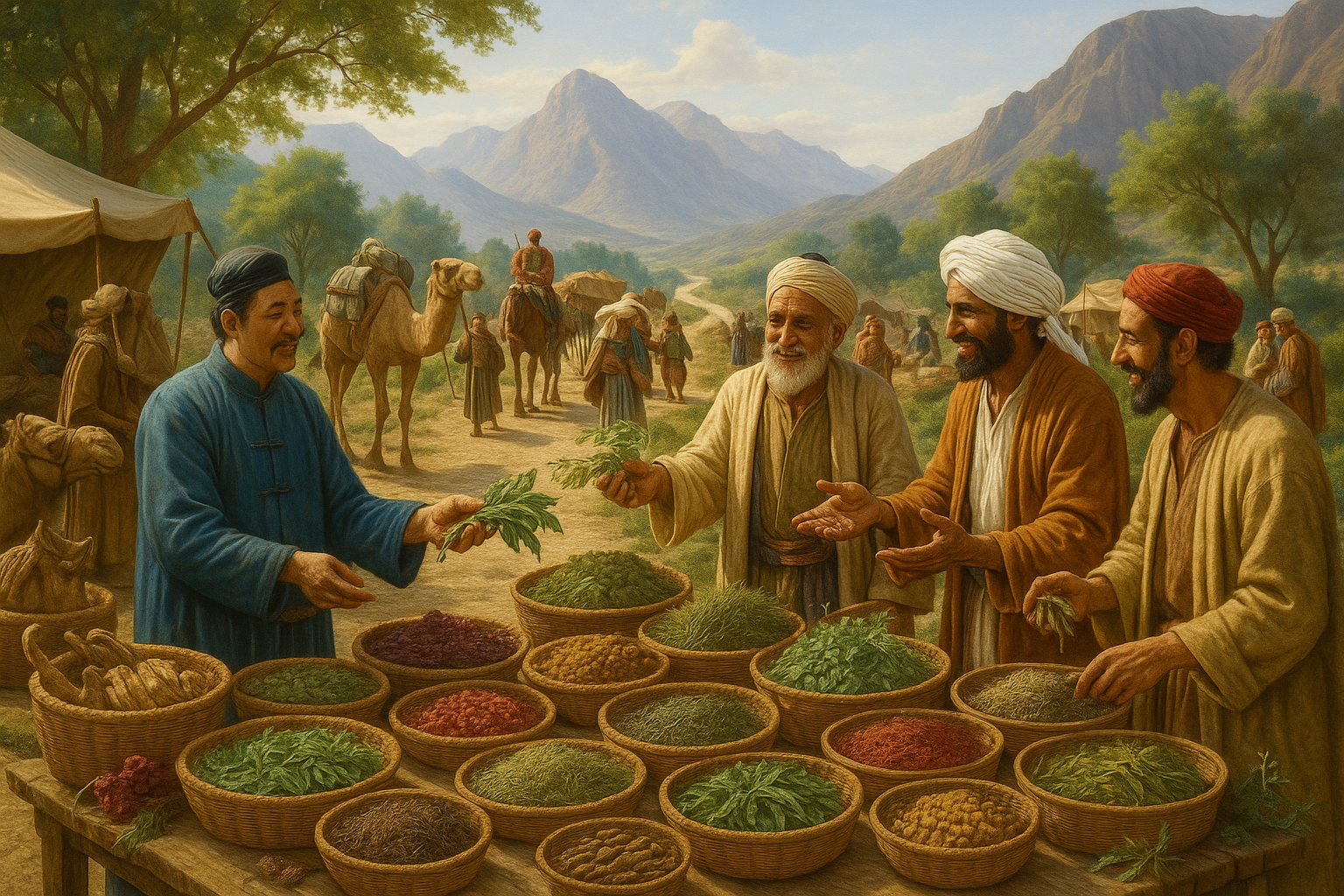In the shadow of ancient coliseums and sprawling forums, where the echoes of gladiators and senators still whisper through the ruins, lies a lesser-known yet equally riveting chapter of Roman history: the art and science of battlefield surgery. Imagine standing on the blood-soaked grounds where fierce warriors once clashed, a place where not only strategies and weapons determined the victor, but where the skills of medici—Roman military doctors—played a crucial role in the survival of countless soldiers. 🏺
The Roman Empire, known for its architectural marvels and complex political systems, was also a pioneer in medical practices, especially on the battlefield. This fascinating facet of history not only showcases their innovative spirit but also reveals their deep understanding of human anatomy and healing. Their methods, albeit primitive by today’s standards, laid the groundwork for many modern surgical techniques. In this blog post, we’ll peel back the layers of time to explore these ancient medical practices, delving into how Roman battlefield surgery was performed and the surprising advancements they achieved.
One might wonder: how did Roman doctors manage to perform surgeries in the chaotic and unsanitary conditions of a battlefield? The answer lies in their meticulous organization and ingenious improvisation. Roman legions were accompanied by skilled medici who carried an array of surgical tools, many of which resemble those used today. From scalpels to bone saws, these tools were crafted with precision and were instrumental in executing life-saving procedures. Their medical kits were not just rudimentary collections of tools, but well-thought-out arsenals designed to tackle a wide array of injuries.
Moreover, the Romans were adept at triage, prioritizing the wounded based on the severity of their injuries. This method ensured that those who needed immediate attention received it promptly, a practice that has persisted into modern emergency medicine. Their understanding of sanitation, although limited, was surprisingly advanced for the era. They implemented basic antiseptic techniques, such as boiling water to clean wounds, which significantly reduced the risk of infection. 🏥
But the innovation did not stop at tools and triage. Roman medici were pioneers in pain management and anesthesia, using natural remedies like opium and mandrake to alleviate suffering during surgeries. This not only made the procedures more bearable for the injured soldiers but also allowed the surgeons to work with greater precision and focus. These early forms of anesthesia highlight the Romans’ resourcefulness in overcoming the challenges posed by battlefield conditions.
As we journey further into this exploration, we’ll uncover the stories of notable Roman physicians whose contributions to medicine have left a lasting legacy. Figures such as Galen, whose extensive writings on anatomy and medicine influenced both his contemporaries and future generations, offer a window into the medical philosophies of the time. His observations and teachings underscore the importance of empirical knowledge and the relentless pursuit of understanding the human body.
The Romans also placed a strong emphasis on recovery and rehabilitation, recognizing the importance of restoring their soldiers to full health. They developed structured rehabilitation programs that included physical therapy, a concept that continues to be a cornerstone of modern medicine. The legions’ success depended not only on their combat prowess but also on their ability to recuperate and return to the field as quickly as possible.
Through this deep dive into ancient Roman battlefield surgery, we aim to shed light on the remarkable resilience and ingenuity of Roman medics. Their legacy is not merely a collection of surgical techniques but a testament to the enduring human spirit and our innate drive to innovate and adapt. By understanding these early practices, we gain a deeper appreciation for the evolution of medicine and the timeless quest to save lives.
Prepare to step back in time and witness the bravery and brilliance of those who practiced the art of healing amidst the tumult of war. The journey promises not only to inform but also to inspire, as we unveil the secrets of ancient Roman battlefield surgery and its impact on the world we know today. 🗡️
# Unveiling the Secrets of Ancient Roman Battlefield Surgery: A Glimpse into the Brave and Innovative Medical Practices of the Past
The medical practices of ancient Rome, particularly those applied in the heat of battle, are a testament to the resilience and ingenuity of the Roman civilization. While often overshadowed by the grandeur of Roman architecture and the military prowess of its legions, battlefield surgery was a crucial component of the Roman military machine, enabling soldiers to return to the fray or, at the very least, survive their wounds. This article delves deep into the captivating world of Roman battlefield surgery, exploring the techniques, tools, and innovations that defined this critical aspect of ancient warfare.
## The Evolution of Roman Medical Practices: From Myth to Method
Roman medicine, like many aspects of Roman culture, was heavily influenced by Greek practices. Initially steeped in superstition and mythology, Roman medicine gradually evolved into a more empirical science, particularly in the context of military needs.
### The Influence of Greek Medicine
The Romans were pragmatic in their approach to medicine, adopting and adapting the practices of the Greeks, who were renowned for their medical knowledge. Figures such as Hippocrates and Galen left an indelible mark on Roman medical practices. Roman doctors, often slaves or freedmen of Greek origin, brought with them the accumulated knowledge of centuries of Greek medical advancements. This exchange of knowledge was pivotal in transitioning Roman medicine from the realm of religious ritual to a more methodical and observational practice.
– **Key Greek Contributions:**
– Emphasis on observation and diagnosis.
– Development of surgical tools and techniques.
– Introduction of herbal remedies and the concept of balancing bodily humors.
### Military Necessities: The Birth of Battlefield Surgery
The Roman military was not just a force of conquest but also a driver of medical innovation. The need to treat wounded soldiers quickly and efficiently led to the establishment of more formalized surgical practices. The Roman army’s structure allowed for the development of specialized medical roles, including medici (military doctors) and capsarii (orderlies), who were tasked with providing immediate care on the battlefield.
– **Innovations in Roman Battlefield Surgery:**
– **Field Hospitals:** Also known as valetudinaria, these were the first organized military hospitals, providing a controlled environment for surgery and recovery.
– **Specialized Surgical Tools:** The Romans developed a range of tools specifically for battlefield surgery, such as scalpels, forceps, and catheters.
– **Standardized Procedures:** The emphasis on consistency and efficiency led to the development of standardized surgical procedures, which were disseminated throughout the Roman Empire.
### The Role of Religion and Superstition
Despite the advancements in medical practices, religion and superstition still played a significant role in Roman medicine. Soldiers would often invoke the protection of deities such as Asclepius, the god of healing, and use amulets or charms as part of their recovery process. This blend of science and superstition is a fascinating aspect of Roman medicine, illustrating the transitional nature of their medical practices.
– **Superstitious Practices:**
– Use of incantations and prayers alongside surgical procedures.
– Reliance on oracles and augurs for favorable outcomes in healing.
– Incorporation of ritualistic elements in medical treatment.
## Surgical Techniques and Tools: The Art and Science of Roman Medicine
The surgical techniques and tools employed by Roman medici were surprisingly advanced, reflecting a sophisticated understanding of human anatomy and a practical approach to medical care. The tools used in Roman surgery were often crafted from high-quality bronze or iron and were designed to perform specific functions with precision.
### An Array of Surgical Instruments
Roman surgical instruments were incredibly varied, each serving a distinct purpose. These tools were critical in performing a range of surgical procedures, from amputations to trepanations.
– **Common Surgical Instruments:**
– **Scalpel:** Used for making incisions; designed with replaceable blades for practicality.
– **Forceps:** Essential for gripping and extracting objects or tissues.
– **Catheter:** Utilized for relieving urinary blockages, showcasing an understanding of internal medicine.
– **Probes and Specula:** Used to explore wounds and orifices.
### Table: Comparison of Roman and Modern Surgical Tools
| Tool | Roman Version | Modern Equivalent |
|---|---|---|
| Scalpel | Bronze blade with wooden handle | Stainless steel, disposable blades |
| Forceps | Bronze, straight or curved | Stainless steel, various sizes and shapes |
| Catheter | Bronze tube, curved design | Flexible, often plastic or silicone |
### Surgical Procedures: From Amputation to Trepanation
The procedures performed by Roman surgeons were diverse and, at times, remarkably complex. Despite the lack of modern anesthesia, Roman medici were able to perform a range of surgeries that were crucial in saving lives on the battlefield.
– **Key Surgical Procedures:**
– **Amputation:** Often used to prevent the spread of infection or gangrene, amputations were performed swiftly and with precision.
– **Trepanation:** A procedure to relieve pressure from head injuries by drilling into the skull, demonstrating an understanding of head trauma.
– **Cauterization:** Used to seal wounds and stop bleeding, this technique involved applying heat to tissues.
## Healing the Wounded: Post-Operative Care and Recovery
After surgery, the road to recovery for Roman soldiers was a critical phase. The approach to post-operative care was holistic, integrating rest, diet, and herbal medicine to facilitate healing.
### The Importance of Rest and Rehabilitation
Rest was deemed essential for recovery, and soldiers were often placed in valetudinaria where they could recuperate in a controlled environment. These military hospitals were equipped with the resources needed to provide ongoing care, including clean bedding, adequate food, and medical attention.
– **Components of Recovery:**
– **Rest:** Providing soldiers with a peaceful environment to heal.
– **Diet:** Emphasis on nutrition to support the body’s healing process.
– **Herbal Medicine:** Use of natural remedies to aid recovery and prevent infection.
### The Use of Herbal Remedies
Herbal medicine was a cornerstone of Roman medical practices. The knowledge of medicinal plants was extensive, and these natural remedies were used to treat a wide range of ailments.
– **Common Herbal Remedies:**
– **Garlic:** Used for its antiseptic properties.
– **Willow Bark:** Containing salicylic acid, a precursor to modern aspirin, used for pain relief.
– **Honey:** Known for its antibacterial properties, applied to wounds to prevent infection.
### Table: Popular Roman Herbal Remedies and Their Modern Uses
| Herb | Roman Use | Modern Equivalent |
|---|---|---|
| Garlic | Antiseptic, infection prevention | Antimicrobial, boosts immunity |
| Willow Bark | Pain relief | Aspirin (pain relief) |
| Honey | Antibacterial, wound treatment | Antiseptic, promotes healing |
## Training the Medici: Education and Transmission of Medical Knowledge
The training of Roman medici was an essential component of the military medical system, ensuring that soldiers received the best possible care in times of need. This section explores how medical knowledge was disseminated and how practitioners were trained in ancient Rome.
### The Role of Medical Schools and Apprenticeships
While there were no formal medical schools as we know them today, Roman medical education was robust, relying on a combination of apprenticeship and the study of Greek texts. Aspiring medici would learn by observing and assisting experienced doctors, gradually acquiring the skills necessary to practice independently.
– **Education and Training Pathways:**
– **Apprenticeship:** Hands-on learning under the guidance of experienced physicians.
– **Study of Texts:** Greek medical texts, particularly those of Hippocrates and Galen, were foundational.
– **On-the-Job Experience:** Exposure to a variety of cases in military hospitals and on the battlefield.
### The Dissemination of Medical Knowledge
The Roman Empire’s vastness facilitated the widespread dissemination of medical knowledge. Military campaigns and the movement of troops across different regions allowed for the exchange of medical practices and innovations.
– **Mechanisms of Knowledge Transfer:**
– **Military Campaigns:** Doctors accompanied legions, sharing their knowledge and learning from local practices.
– **Written Records:** Documentation of medical procedures and treatments in manuscripts.
– **Professional Networks:** Collaboration and communication among physicians across the empire.
### Video Recommendation: Ancient Roman Medicine
To gain a deeper understanding of Roman medical practices, watch this insightful video that explores the complexities and innovations of ancient Roman medicine: [Ancient Roman Medicine by Historia Civilis](https://www.youtube.com/watch?v=8ogfyT8QbCA).
## Conclusion
The world of ancient Roman battlefield surgery is a fascinating intersection of science, art, and necessity. The innovations and practices developed by the Romans laid the groundwork for many modern medical procedures, highlighting the enduring legacy of their contributions to the field of medicine. As we continue to uncover the secrets of Roman medicine, we gain not only a greater appreciation for their ingenuity but also a deeper understanding of the resilience and adaptability of human civilization.

Conclusion: Ancient Roman Battlefield Surgery Secrets ⚔️🩺
As we conclude our exploration of Ancient Roman battlefield surgery, it’s clear that Roman military medicine combined practical ingenuity with disciplined organization to save lives amid the chaos of war. From triage and mobile field hospitals to innovative surgical tools and techniques, Roman surgeons developed methods that balanced speed, sterility (for the era), and pragmatic care—practices that reduced mortality and kept armies combat-ready.
The lasting value of these surgical secrets lies in their blend of engineering, logistics, and clinical skill. 🏛️💡 By prioritizing mobility, standardized procedures, and systematic training, Roman medicine offers enduring lessons for modern military and emergency medicine: preparedness, adaptability, and the ruthless focus on saving lives under pressure. Ultimately, studying Roman battlefield surgery is more than a historical curiosity — it reveals how necessity spurs medical innovation and how ancient wisdom can still inform contemporary approaches to trauma care and mass-casualty response.
Toni Santos is a researcher and practitioner specializing in the study of ancestral healing systems, energetic frameworks of the body, ancient herbal traditions, and sacred operative procedures. Through an interdisciplinary and historically-rooted lens, Toni investigates how humanity has preserved and transmitted knowledge of preventive health, subtle anatomy, plant medicine, and ritual intervention — across cultures, lineages, and sacred traditions. His work is grounded in a fascination with healing not only as physical remedy, but as carriers of hidden wisdom. From ancestral preventive health practices to energetic healing maps and ritual operative techniques, Toni uncovers the visual and symbolic tools through which cultures preserved their relationship with the body, spirit, and plant world. With a background in ethnomedical history and comparative anatomy systems, Toni blends archival research with practical study to reveal how ancient societies used plants, energy, and ceremony to shape health, transmit wisdom, and encode sacred knowledge. As the creative mind behind jirenx.com, Toni curates illustrated frameworks, historical case studies, and symbolic interpretations that revive the deep cultural ties between ancestral medicine, energetic healing, and sacred procedure. His work is a tribute to: The lost healing wisdom of Ancestral Preventive Health Practices The guarded rituals of Energetic Anatomy and Healing Maps The ancient knowledge of Herbal Pharmacology of Antiquity The layered sacred practice of Ritual Surgery and Sacred Operations Whether you're a traditional medicine scholar, energetic healer, or curious seeker of ancestral health wisdom, Toni invites you to explore the hidden roots of sacred medicine — one practice, one map, one ritual at a time.




